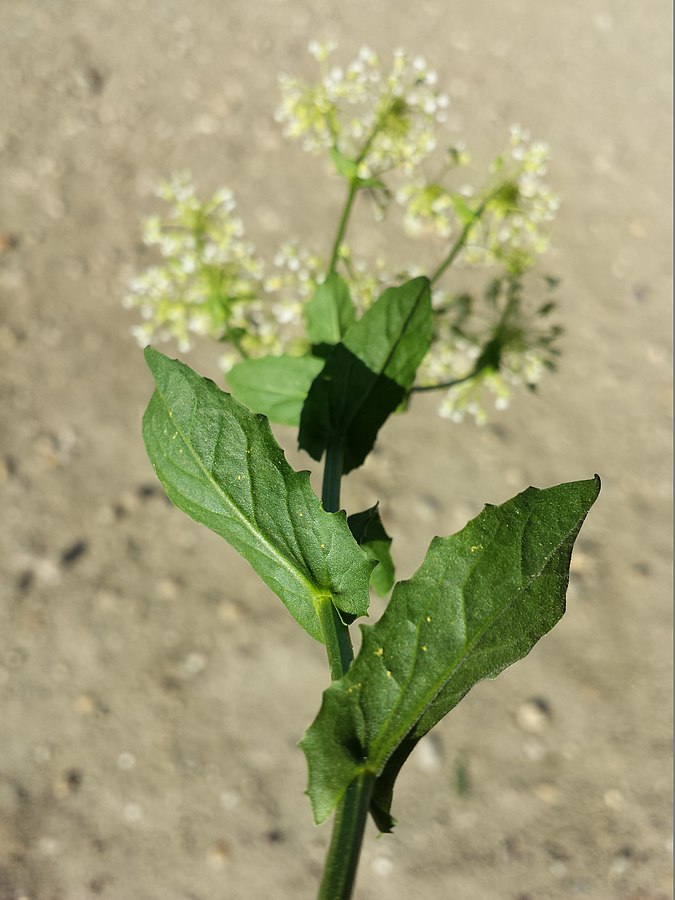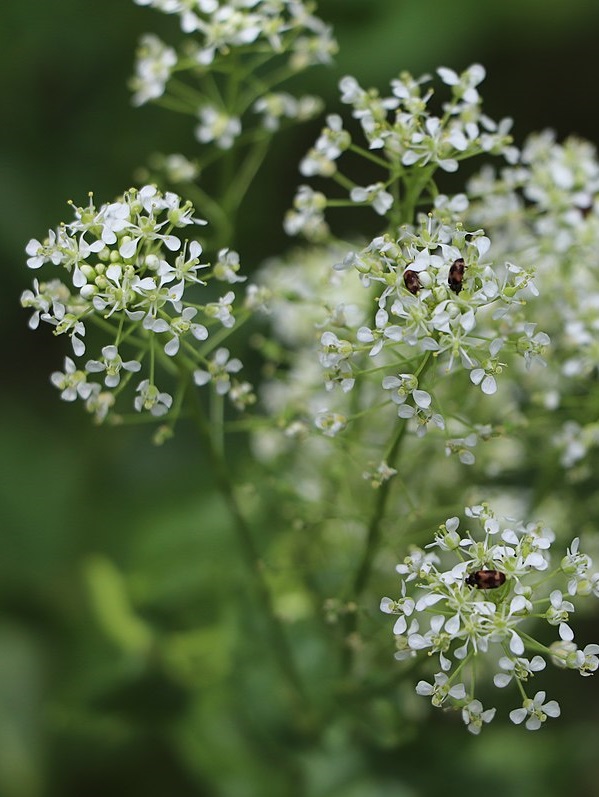Hoary Cress

Hoary Cress
(Lepidium draba)
Priority: - Prevent / EDRR
Tags: Agricultural | Terrestrial
Identification and Reproduction
Identification:
- Hoary cress is a perennial forb tha can grow up to 0.6 m tall.
- It produces leaves that are soft, greyish green, and covered in fine hairs. Upper leaves clasp around the stem where it divides into two lobe-like segments.
- Flowers appear in the early spring until early summer. Flowers are small, composed of four petals and form flat clusters at the end of stems. With maturity flowers will appear cream-coloured.
- Has flat heart-shaped seedpods. Each seedpod will contain two reddish-brown seeds.
Reproduction:
- Plants reproduce by seed and rhizomes.
- Lateral shoots can spread up to 2 m per year.
- A single plant can produce up to 450 new shoots in a year.
- Each individual plant will produce from 1,200 to 4,800 seeds.
- Seeds remain viable in the soil for two years.
- Hoary cress can germinate within three weeks of seed dispersal.
Habitat & Ecology
- Prefers disturbed sites with moderate moisture.
- Well adapted to different soil textures.
- Thrives in sites that are exposed with no shade.
- Commonly found on roadsides, ditches, sub-irrigated pastures, rangeland and other disturbed sites.
Impacts
Social:
- Invasions of hoary cress will degrade and reduce crop, pasture, rangeland quality.
- It also reduces foraging potential for livestock.
- Often regarded as a crop seed contaminant.
- Posesses allelopathic properties that can prevent wheat, barley and some vegetable crops.
Ecological:
- It will negatively impact biodiversity and displace native vegetation.
- Seedlings are quick to up-take moisture from the soil, decreasing water availabilty for native species.
Management
Prevention is a high priority for this plant.
- Clean, wash and ensure plants and seeds are not attached to vechicles, clothing or equipment when leaving an infested site.
Mechanical/Manual Control:
- Hand pulling will only be effective on young, small infestations. Success will only be seen when entire plants, including the roots are removed. Weed pulls may take up to 4 years for hoary cress eradication. It is recommended to remove plants when soil is moist so roots do not break.
- Seeding the surrounding area with perennial grasses or legumes can help species out-compete hoary cress.
- Soil cultivation can help prevent the spread of hoary cress and stop roots from extending.
Chemical Control:
- Chemical treatment can be difficult as hoary cress often grows within crop fields, care should be taken when applying herbicide.
- Currently glyphosate and 2,4-D has shown success on managing this plant.
- Please carefully read labels prior to application.
Resources
For more details check out the Invasive Species Compendium datasheet on Lepidium draba (Hoary cress).
Download A Guide to Weeds in British Columbia for Hoary Cress here.
Header photo (Stefan.lefnaer).




